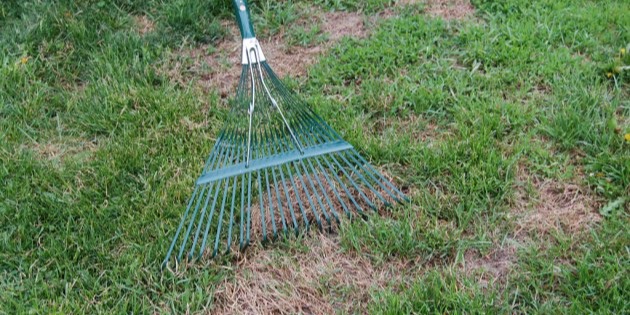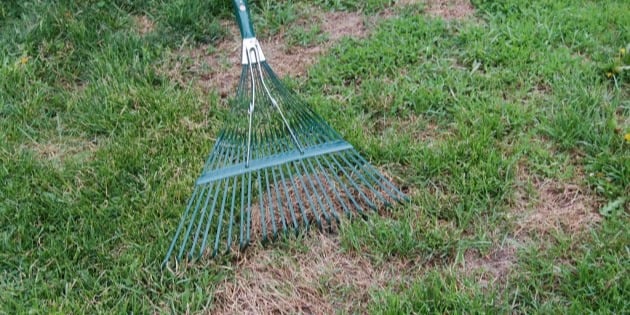
Raking is a ritual for most homeowners as it signals the arrival of spring. After months of snow and freezing temperatures most homeowners embrace the warmer weather and look forward to getting outside and preparing the lawn for a year of enjoyment.
Raking can be a big job, especially if the lawn wasn’t cleaned up diligently in the fall before the snow came. It is important to remove anything that is covering the lawn as early as possible so the lawn isn’t held back after the snow melts. Giving your lawn a light rake is a good first step and common practice one can do to get the lawn moving in the right direction.
Light Raking
Raking is often the first task many homeowners do when it comes time to get the lawn ready for spring. Using a soft leaf rake it is important to be gentle on the lawn. Raking with a hard metal rake or raking very aggressive with a leaf rake can do more damage than good. The lawn can easily be ripped, torn and removed if you aren’t careful. Light raking is recommended to help loosen up matted down grass increasing airflow from the surface to the soil.
Removing Debris
Rake away debris including leaves, branches, sticks/twigs and excessive clippings that are piled up and covering the lawn. This will ensure nothing gets in the way when you are ready to mow, water, seed, fertilize and so on.
Thatch Prevention
Raking can do more than just remove debris. Raking can also help remove thatch layer buildup. A more aggressive raking will help remove dead grass blades and other dead and decaying organic matter that is just waiting to add itself to an undesirable thatch layer.
Voles
Small rodents called voles commonly reek havoc randomly tunneling across the surface of the lawn during the winter when snow cover exists. This damage can be excessive with tunnels and piles of dead grass littered across the lawn. Debris and
tunneling can be lightly raked away to encourage quick recovery.






